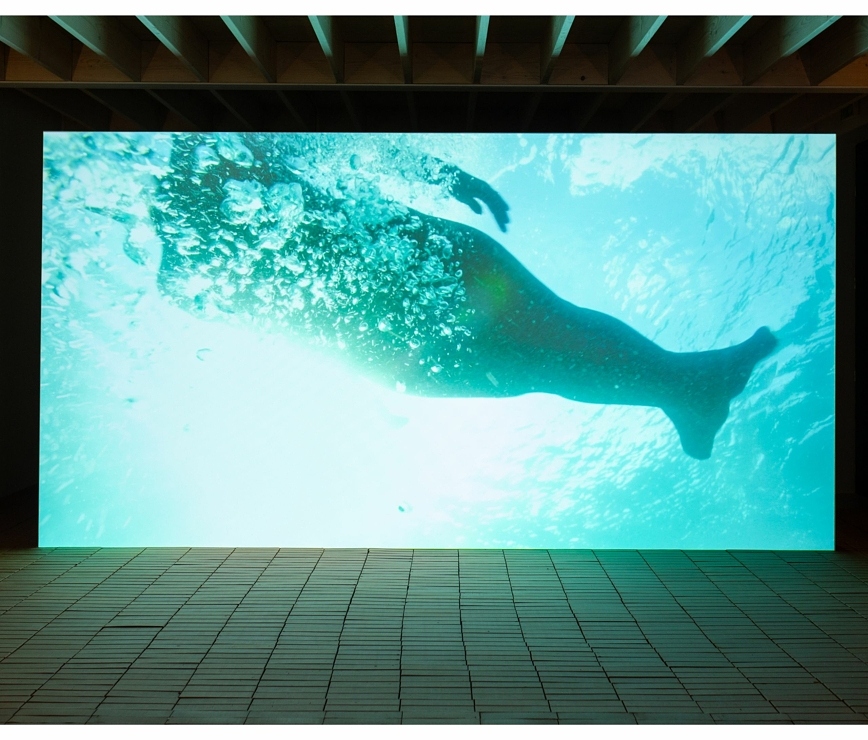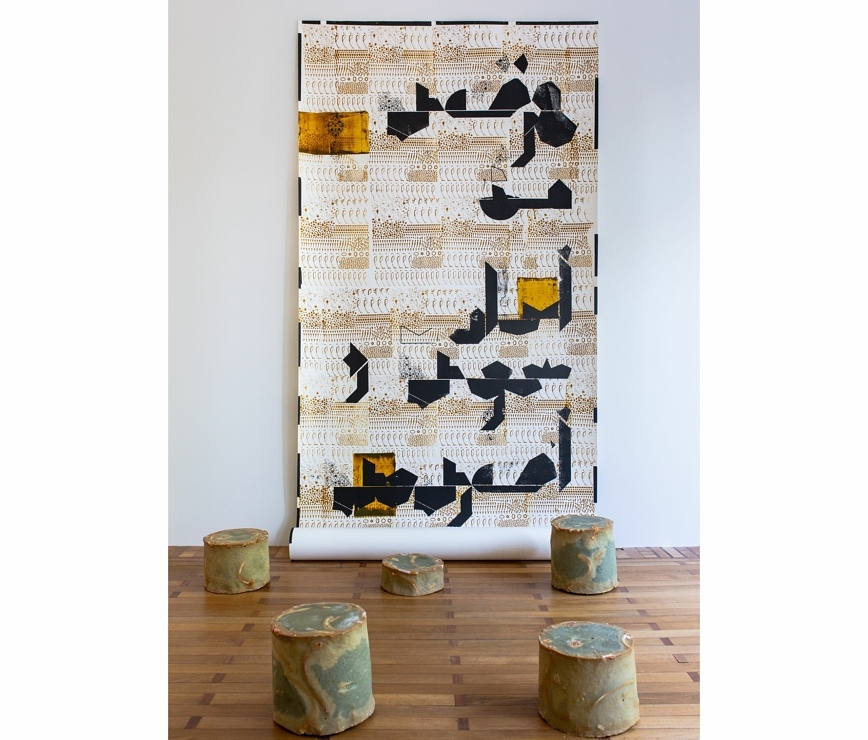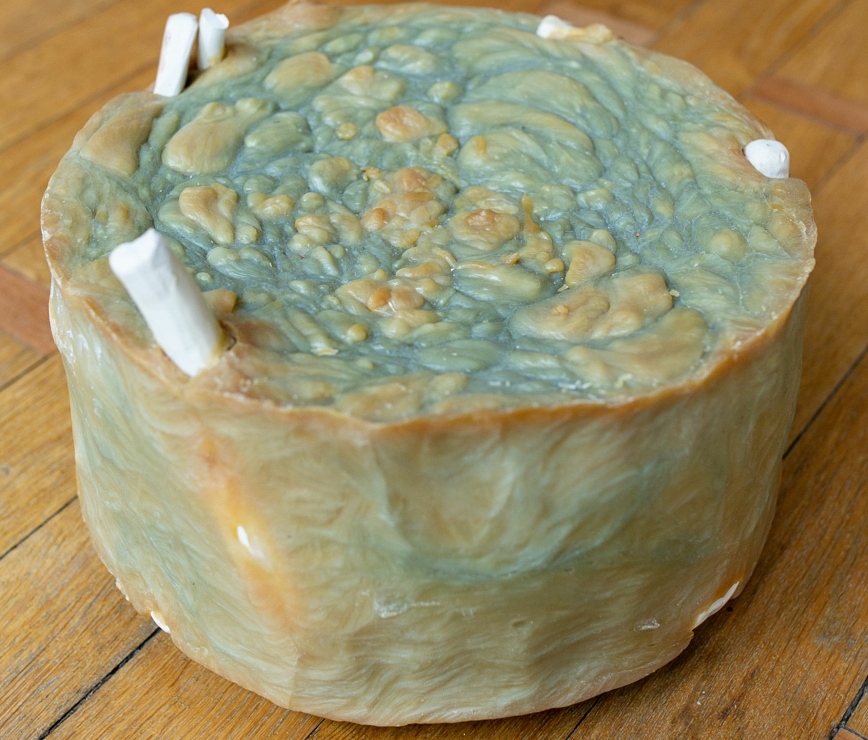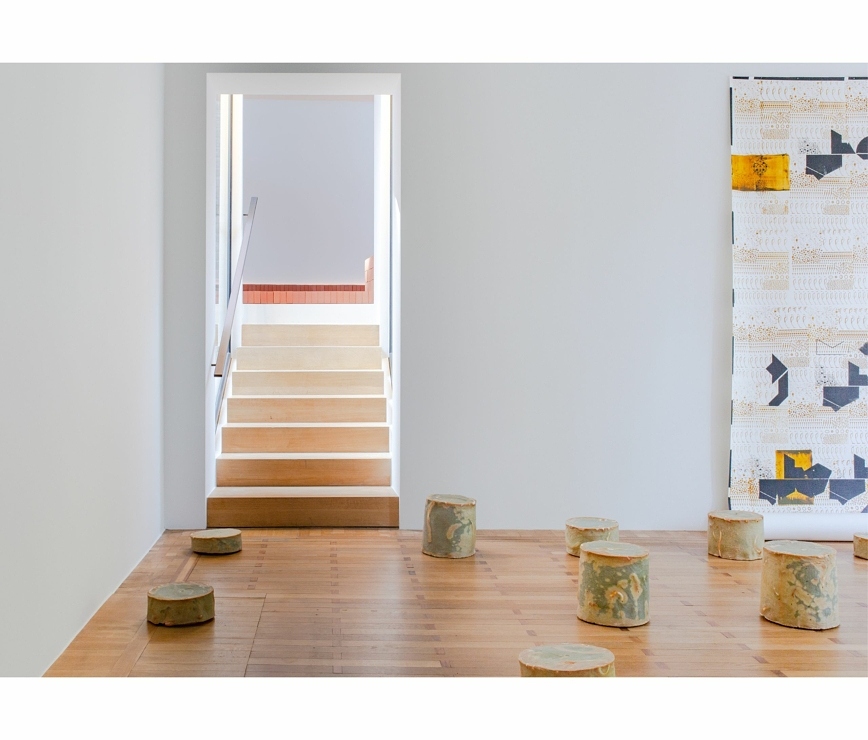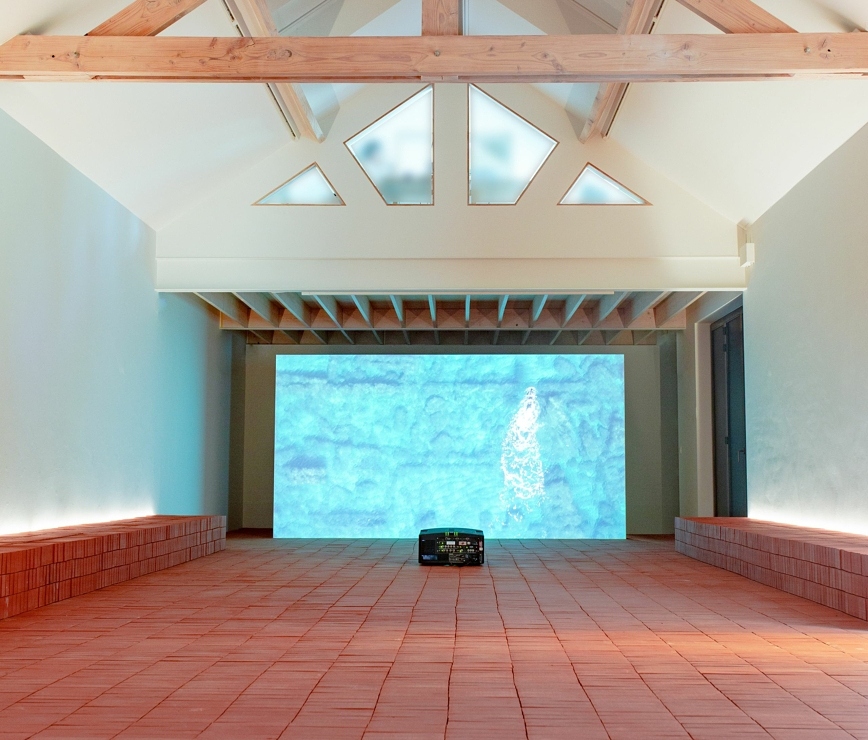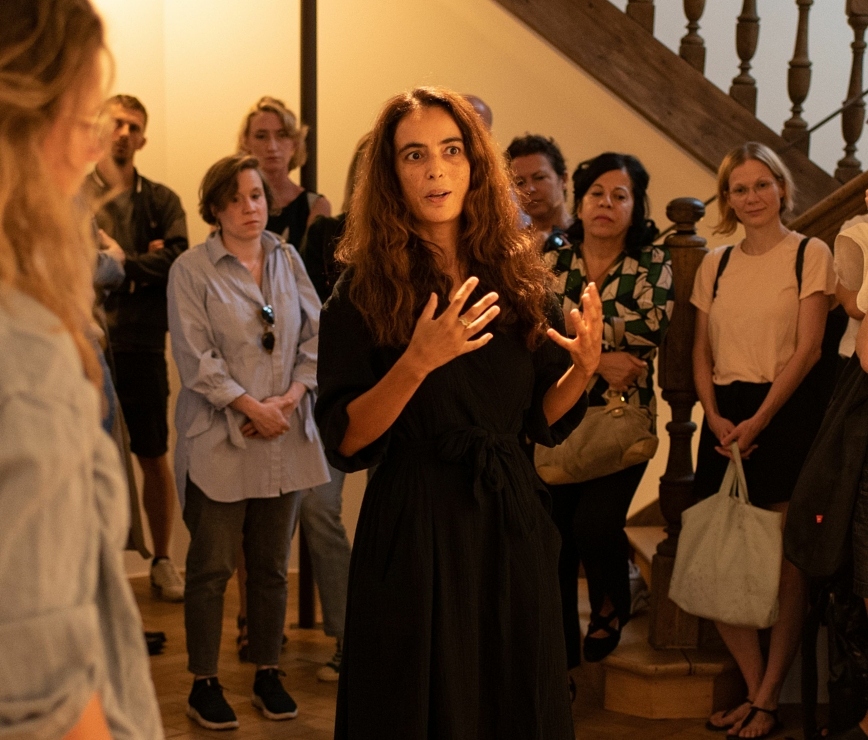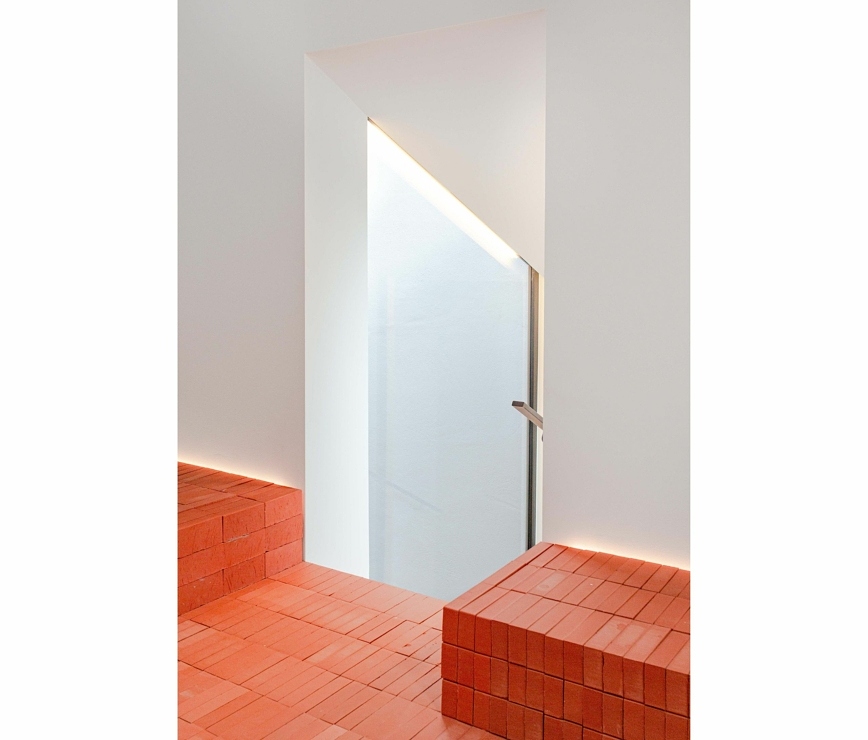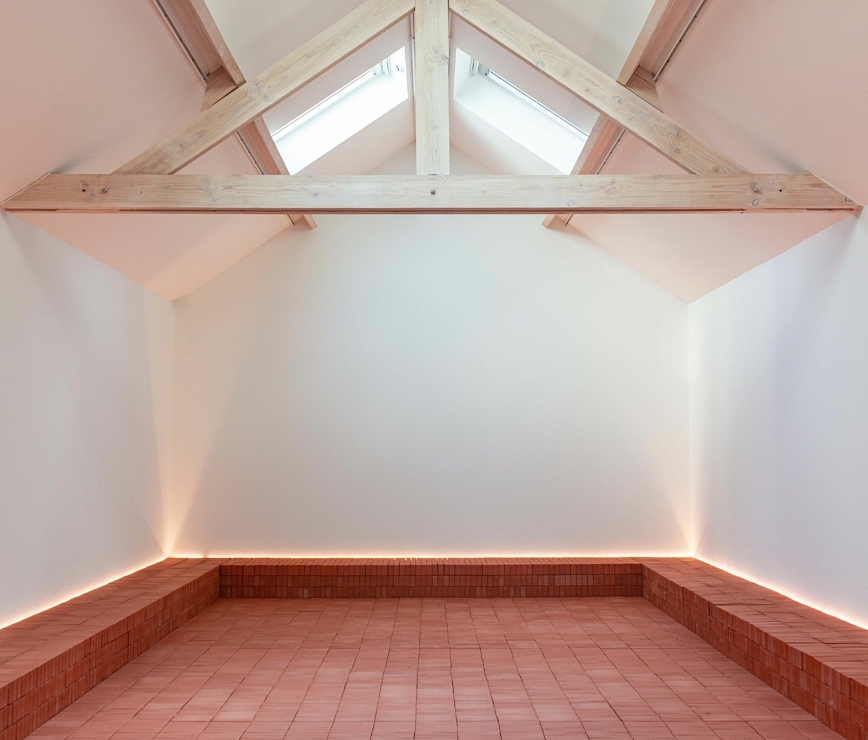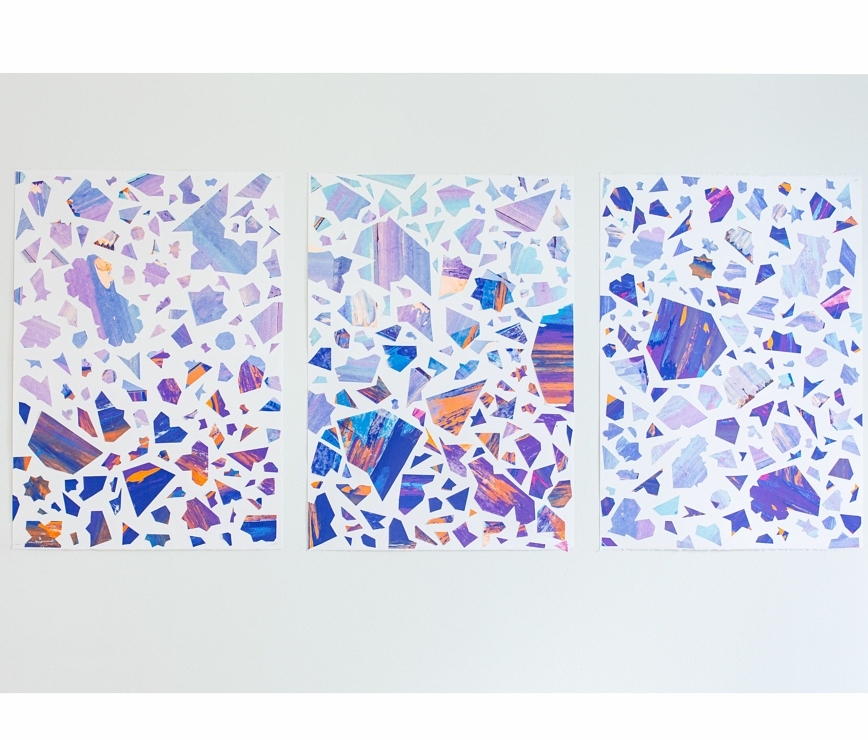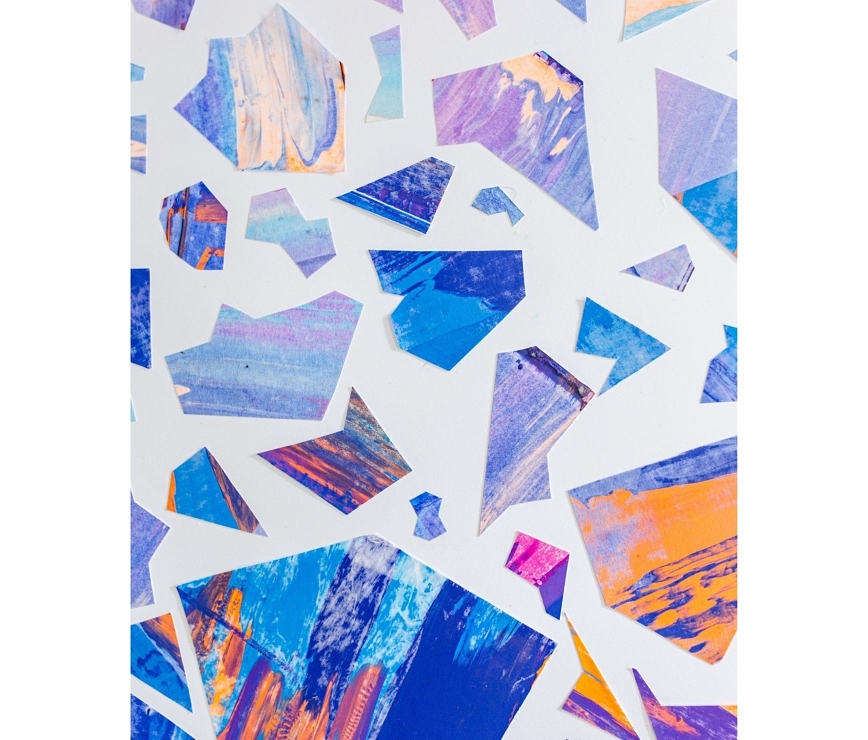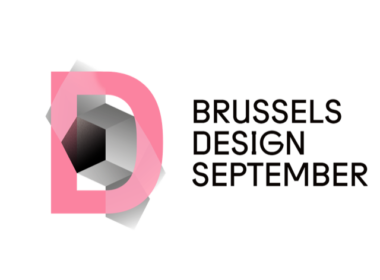The Fondation Thalie highlights multidisciplinary artistic practices, emphasizing a dialogue between visual arts, craftsmanship and ecology. The exhibit Warché—meaning ‘worksite’ in Arabic—conveys a reflection on our relationship to time as we witness moments on Earth through architecture and visual arts.
It is rooted in the history of Beirut, continues in the sunken Roman city of Baiae, and Arabic geometrical architectures where we become witnesses to a world that is the future, the present, and the past. The exhibit is based in particular on the personal history of Lina Ghotmeh, an architect and Beirut native. She defines herself as a new kind of archaeologist: “searching through the past to write our future”. Two contemporary artists are shown alongside her: Emilija Škarnulyté, Lithuanian, whose work is about the perception and historical influence of geological time, especially via major human conflicts, and Sara Ouhaddou, a French artist with Moroccan origins, whose work examines the history of construction and the loss of architectural identities.
Lina Ghotmeh formulated her architecture career in relationship to Beirut. “After the war, there was an intense period of reconstruction. The city was gutted and destroyed and then rebuilt. It became a terrain beneath an open sky, bare and blank, yet at the same time its entire history was emerging: the Phoenician city, the Greco-Roman civilization, etc. It was destroyed and rebuilt seven times… I was attracted to the materials, the ground, and the history of the terrain. I began to think about architecture as a permanent relationship to history, and to the remains of the past and of the subsoil.”
Here, the architect takes over the floor of the exhibition space, carpeting it with locally sourced bricks—demonstrating her commitment to this organically sourced material and to earthen architecture, an ancient tradition in nearby Middle Eastern countries and the Mediterranean region.
Emilija Škarnulyté appears alongside as an intermediary between nature and technology, or between human/non-human creators. The immersive sound and video landscape “Sunken Cities” confronts abandoned buildings wrapped up in myths and marked by decadence, with a mermaid figure playing the role of confronting myth. Her work explores sunken cities with a retro-futuristic view of our planet, a perspective of a time not yet come to pass in which the human race has perhaps disappeared and where nature has taken over. Škarnulyté explains this as “the ruins of human activity seen from a distant future.”
In a constant dialogue between tradition and modernity, Sara Ouhaddou recovers illustrated plans of Islamic geometry and deconstructs them in order to create new shapes: a geometrical alphabet.
In this process, she is inspired by architecture, written Arabic, and Berber symbols of craftsmanship; she unveils a new series of collages created from images of fragments of sky. Here, archaeology is ambivalently about disappearance/appearance, exalting the emergence of vestiges (whether fictive or real).
The artist continues her research on the history of alphabets–which reveal the identities and successive evolutions of a civilization with the installation “Je te rends ce qui m’appartient / Tu me rends ce qui t’appartient” [“I return what belongs to me / You return what belongs to you”], made of Marseille soap, a direct descendant of Aleppo soap: foreign bodies, ceramic bones from the excavated objects, appear stuck there. These columns, both organic and mineral, are made up of the knowledge exchanged in the Middle Ages between the Arab-Andalusian world and Marseille. They testify to the artist’s interest in little-known passageways and found objects discovered in various archaeological excavations of the city and its environs, which, in turn, cast doubt or deconstruct complex stories about the city.
The Warché exhibit addresses how we witness what happens on Earth and, as witnesses, the responsibility stemming from our interpretations, be they political or poetic.
Anissa Touati, Curator of the exhibition
___
• Winner of the prestigious Schelling Foundation Architecture Prize in 2020, Lina Ghotmeh (born in 1980 in Lebannon) has overseen visionary projects at the Estonian National Museum and the El Khoury Foundation’sStone Garden (Beirut). She currently teaches at the Yale School of Architecture and at the University of Toronto; she is co-president of the RST ARCHES network.
• Emilija Škarnulytė (born in 1987 in Lithuania) creates installations and movies that explore the idea of time and invisible structures on a political, geological, and environmental scale. Winner of the Future Generation Art Prize in 2019, she represented Lithuania during the XXII International Exhibition of Triennale Milano and had a solo show at the Tate Modern in 2021.
• Sara Ouhaddou (born in 1986 in France) works between France and Morocco. Her artistic practice questions the use of design as a tool for economic, social, and cultural development, especially within local communities of Moroccan craftsmen. Winner of the 2014 Prize for the Arab Fund for Arts and Culture (AFAC) and the Wanted Design Prize in 2015, she has exhibited at the Marrakech Biennale (2016), the Palais de Tokyo (2020), and at Z33 (2021).
Anissa Touati is a curator with an archaeological background. She is currently the head curator of the Paris Internationale art fair, a guest curator at the Fondation Thalie and the artistic director of the Pavilion for a Mediterranean Nation at the Biennial of Lagos, Nigeria (2022-2023). Formerly the artistic director of the Contemporary Istanbul art fair and associate director of the Chalet Society in Paris, she has organized exhibits around the world, notably in Turkey, Lebanon, Mexico, Argentina, the United States, Italy, and France. She helped launch “Cycles of Collapsing Progress” at the BeMA museum in Lebanon in 2018. Since 2021, she has been a member of the MAH (Musées d’art et d’histoire) committee in Geneva, the acquisition committee of the FRAC in Corsica, and on the jury for the École nationale supérieure d’architecture Paris-Malaquais and the Pujade-Lauraine Prize.
PRACTICAL INFORMATION
Exhibition from 8 September to 10 December 2022
From Wednesday to Friday from 12pm to 6pm, on Saturday from 11am to 6pm
Entrance 5€ / Free* (on presentation of suitable evidence)
*Students, teachers, -26, job seekers, SMART members
Commented tour every Wednesday and Saturday at 3 pm. Free entrance every first Saturday of the month.
Find online our programme of events around the exhibition, with an exceptional round table in partnership with the CIVA on 26 November and the finissage of the exhibition on 10 December with a sound performance by Tarek Atoui.
In partnership with Brussels Design September



